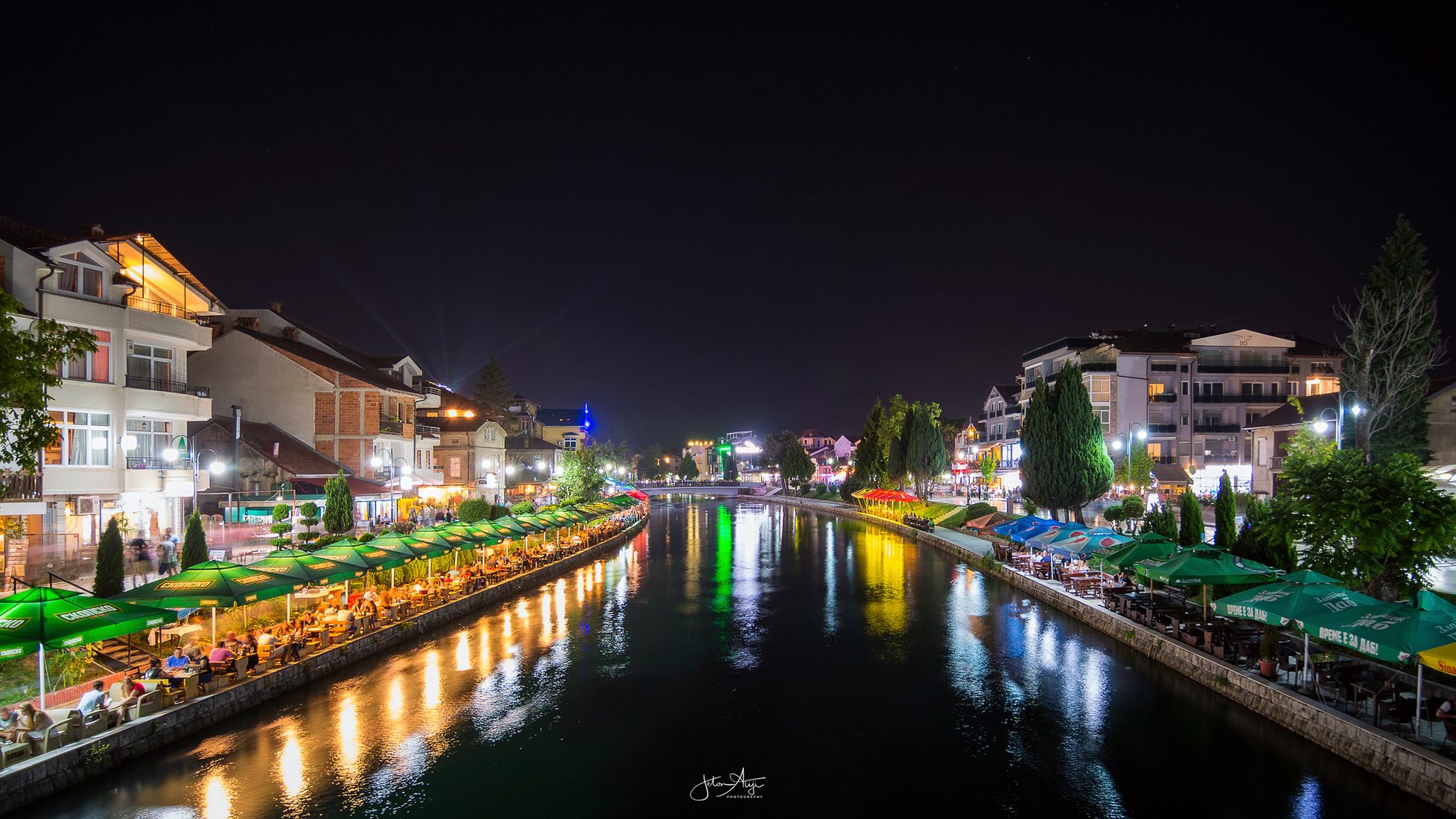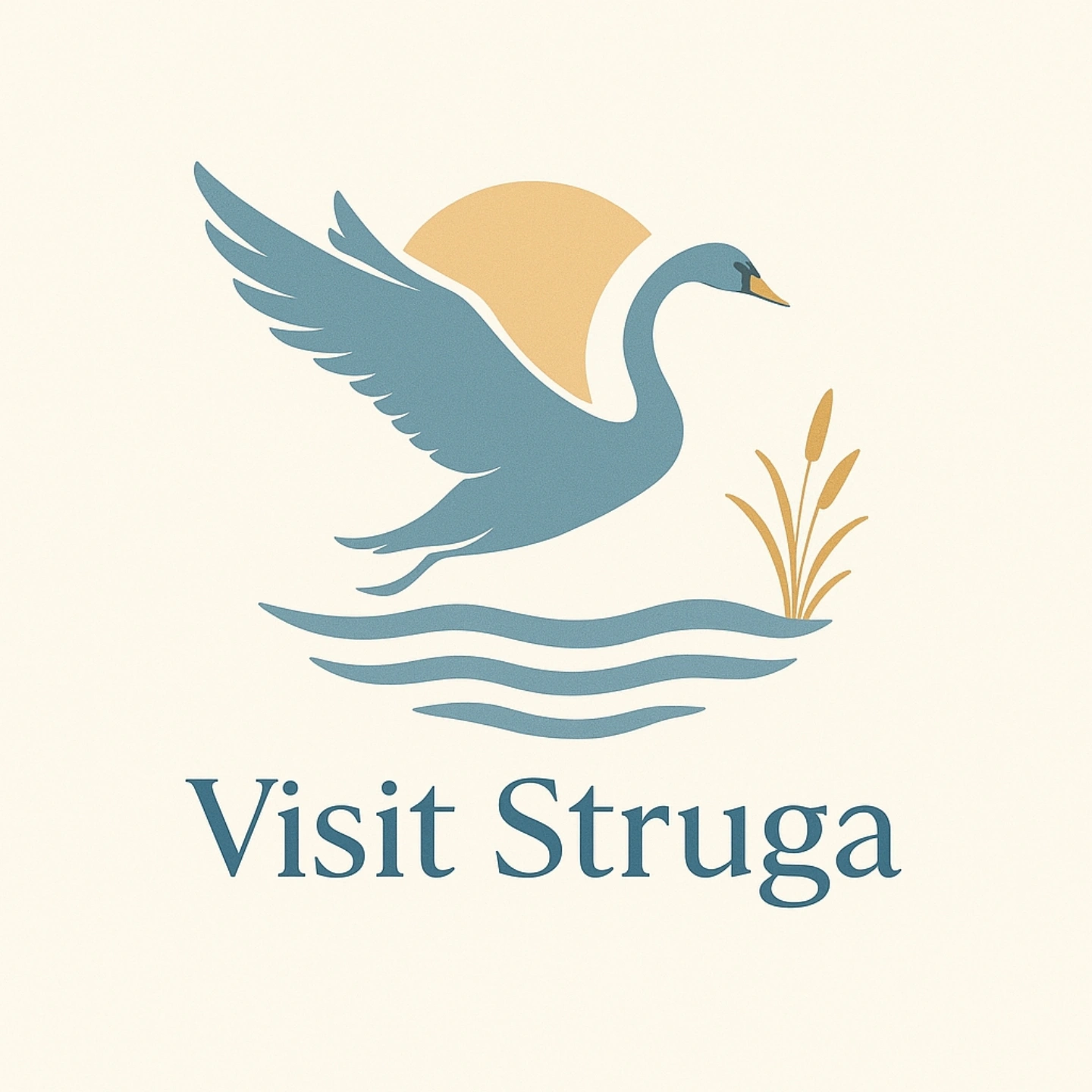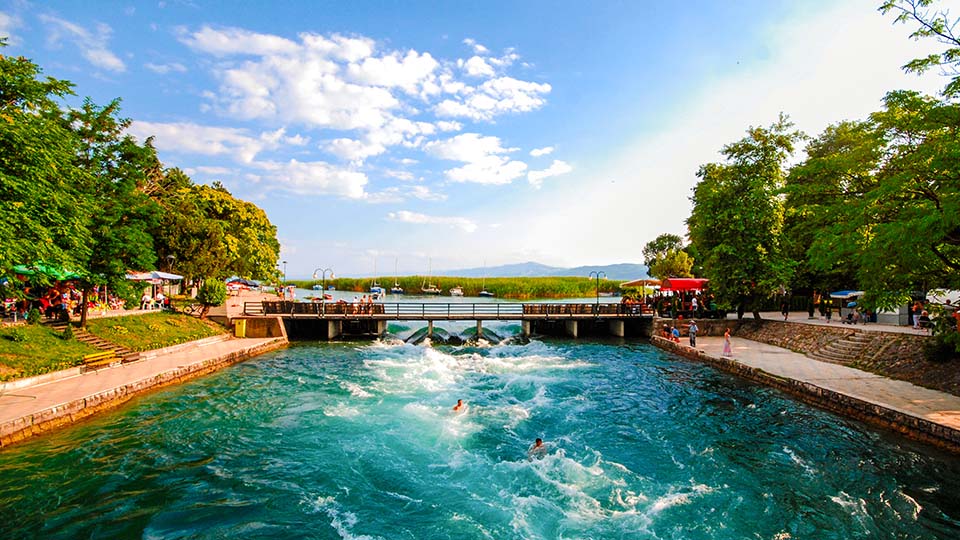Struga is a picturesque town located on the shores of Lake Ohrid, known for its rich cultural heritage, beautiful scenery, and vibrant community.
Geography and Climate
History
In ancient times, the Lake Ohrid region, including Enchalon (ancient name of modern Struga) was inhabited by the Illyrian Enchele and Dassareti tribes.The Via Egnatia ran through the Lake Ohrid region, and is believed to have passed west of Enchalon.
Etymologist Qemal Murati believes that the name Strugë-a was first used as the name of a village; this name was used in a document of Tsar Dusan in the 14th century in the form of Struga. Later, in the 16th-17th centuries, the Codex of Slepçan, the name ‘Strugi’ was used.
In the 16th century the city was visited by the Venetian Ambassador Lorenzo Bernardo who described it as a city in Bulgaria which was more akin to a small village. He describes the town as an important destination for wheat shipments and a town with fertile plains and valleys, and he speaks highly of the local eel and trout.
Struga was visited by Henry Fanshawe Tozer in his travels in the Ottoman Empire, who spoke highly of the region and the Ohrid Lake which he compared to Italian lakes and to Biblical sites such as the Sea of Galilee, he considered Struga to be a head-quarters of fishery in European Turkey and that the fishery in Struga was property of the Ottoman Sultan who sublet it to locals for a large sum, he spoke highly of the endemic Ohrid trout. According to him the marshes in the region were turned into a habitable region by tzar Samuel of Bulgaria at the time when he made the city of Ohrid Bulgarian capital. He visited a large local Bulgarian school and mentioned the admiration that the Byzantine princess Anna Comnena had for the hundred of channels, embankments and watercourses in the city.[14]
In the late 19th and early 20th century, Struga was part of the Manastir Vilayet of the Ottoman Empire.
Struga is the home-city of the Miladinov brothers poets who played a crucial part in the Bulgarian national revival and in whose honor the Struga Poetry Evenings are held in the city. Struga was also the birthplace for a number of IMARO revolutionaries such as Hristo Matov.
Struga was the birthplace in 1865 Ibrahim Temo, who would go on to be a doctor and one of the founders of the Ottoman reform movement known as the Committee of Union and Progress.
Struga was part of the Socialist Federative Republic of Yugoslavia since 1945 as part of the Socialist Republic of Macedonia until the 1991 Macedonian independence referendum when Macedonia peacefully seceded from the federation.story dates back to ancient times, originally known as Enchalon, associated with the Illyrian tribe of Encheles. The name Struga is of Slavic origin and was first documented in the 11th century. Throughout its history, Struga has been governed by various powers, including the Byzantine Empire, the Bulgarian Empire, and the Ottoman Empire. This diverse historical backdrop contributes to its rich cultural tapestry today
Demographics
Cultural Significance
The town also boasts historical landmarks such as the Church of St. George, built on the site of the ancient Church of Samuel, and the Monastery of Kalishta, which offers stunning views of the lake and has beautiful frescoes dating back to the 14th century
Attractions and Activities
Visitors to Struga can enjoy its beautiful beaches, including Galeb, Male, and Female Beach, ideal for relaxation and water activities. The scenic riverfront provides opportunities for leisurely walks and dining at lakeside restaurants. The local cuisine offers a blend of traditional Macedonian and Albanian dishes, establishing a unique culinary scene . Additionally, the town serves as a gateway for boat trips to nearby sites and villages around Lake Ohrid.
In summary, Struga is a charming town rich in history and culture, making it a wonderful destination for both relaxation and exploration. Visitors can immerse themselves in its natural beauty and vibrant traditions, experiencing the best of Macedonian hospitality




